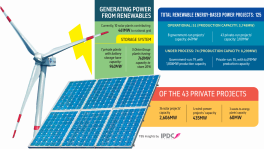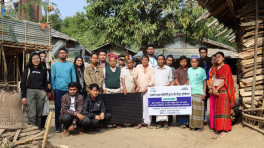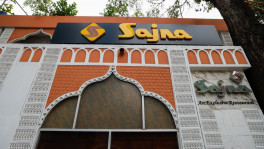Water scarcity in Dinajpur as groundwater level recedes
According to the district’s Department of Public Health Engineering, water cannot be collected from normal tube-wells if the water level decreases to below 25 feet – as usually occurs in the dry season

Momena Khatun, a resident of Indrapur village of Chirirbandar upazila, Dinajpur, has to fetch water from a deep tube-well 1.5 kilometres away from her home. She cannot draw water from the normal tube-wells in her village – except in monsoon season – as the underground water level has been receding for the last 25 years.
"I fetch water in the bucket and fill the drum. I fetch drinking water for two of my cows from a dirty pond near the house," said Momena.
Every day, men and women of the village rush in search of water carrying pitchers, drums and buckets. The people who have deep tube-wells at their houses are free of this suffering but those who are financially vulnerable are dependent on the deep tube-wells of others.
"The tube-well of our house cannot extract water from beneath the ground. I have to beg neighbours for some water. Many do not respond and speak harshly to me. We have been suffering this for the last 25 years," said Shamsunnahar, a resident of the village.
According to the district's Department of Public Health Engineering, water cannot be collected from normal tube-wells if the water level decreases to below 25 feet – as usually occurs in the dry season.
Chirirbandar upazila is one of the areas in Dinajpur where the groundwater level has diminished. A DPHE survey reveals that seven of the upazila's 12 unions have been suffering from a water crisis. According to the survey, the groundwater level has also receded in: four unions of Kaharol upazila, seven unions of Sadar upazila, six unions of Parbatipur, seven unions of Birampur, four unions of Ghoraghat, and one union of the Birol and Phulbari upazilas.
The water level has been receding by three to six feet during the dry season in these areas, said the DHPE.
The government set up 1,648 tube-wells – Tara pumps used for drinking water and limited use for irrigating gardens – in 13 upazilas of the district to solve the crisis of pure drinking water in 2018-19 fiscal year. In the current fiscal year, 4,105 tube-wells have been set up in the district. The DPHE has also received an allocation to set up 26 tube-wells in each union.
Last year, the government set up 296 Tara pumps in Chirirbandar upazila. However, the crisis is not over as every year new areas face a water crisis.
The well-off families of the upazila have set up submersible pumps to meet their daily water requirement.
"We used to collect drinking water from a Tara pump. After that pump went out of order we have now set up a submersible pump for drinking water. It provides less water. We have to face this problem from the Falgun to Jaistha months [of the Bengali calendar]," said Yusuf Ali from Indrapur village.
Mostarina Begum, a female member of Auliapur union, said, "This area faces a serious water crisis for four months every year. There are only three Tara pumps in a union. The water crisis cannot be solved with these three pumps."
Hasibul Hasan, chairman of Auliapur union, said, "The existing Tara pumps are much older and inadequate to meet the demand. Moreover, it is difficult to get water from these Tara pumps."
Officials of the Department of Public Health Engineering said they take the necessary steps to repair Tara pumps when they are informed of problems with them.
"Many are experiencing a water crisis as the water level decreases in the dry season. More Tara pumps will be set up this year," said Hosne Ara, sub-assistant engineer of upazila DPHE.
The officials have been advising people to increase their use of surface water to combat the crisis.
"The groundwater level has been diminishing day by day due to climate change. The use of surface water must increase to end this problem," said Murad Hossain, executive engineer of Dinajpur DPHE.


 Keep updated, follow The Business Standard's Google news channel
Keep updated, follow The Business Standard's Google news channel















